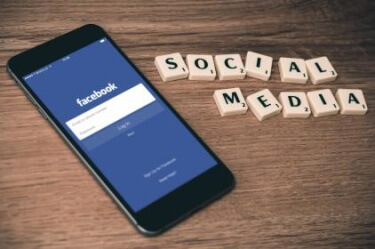My local NFL team are Superbowl Champions. Last season the Seattle Seahawks dominated football and no one exposed the team’s superiority more than running back Marshawn Lynch. When Marshawn carried the ball and turned on “beast mode” more often than not he was a “game changer.” Fire, the printing press, electricity, transistors, and integrated circuits were game changers too. But social media?

In the last issue, I confessed my ignorance about the not-so-new forms of social media that seemingly everyone except me was using. It was time to get a Twitter account and as a few of you know I’ve since “tweeted” things I felt worth sharing. But I’m still puzzled. How the heck does anyone have time to read these twittering messages that pour on us in an almost continuous daily torrent? And that’s just the tweets, not even the information they point to. Apparently, today’s millions of Twitter users have huge amounts of free time waiting to be filled. Obviously I have time-management issues to resolve.
The buzz surrounding social media urges us to wonder if it might be a game changer in physical education. At the recent National PE Institute conference, a young physical educator named Joey Feith delivered an impressive keynote presentation. He described an expanding worldwide network of connected PE practitioners. You can watch it here. Joey pointed out some of the remarkable collaborative PE work going on, which above all else leads me to think that our future is in good hands with motivated physical educators like Joey and his colleagues. But despite Joey’s very obvious passion for social media I’m not so sure that technology of any form is really critical to preserving physical education’s public school existence.
If you think about it, (and as John Helion from West Chester University pointed out to me a few years ago), no one graduates as a physical or health education teacher not knowing what “good” teaching looks like. Certainly our skills and aptitudes vary, but all of us have a darn good idea of what and how we should be teaching our students. Do any new teachers really not know what “bad” or “non-teaching” in PE looks like in practice? That’s hard to believe. And yet, fast-forward a few years and we commonly see both new and seasoned physical educators content to continue the lamentable and embarrassing teaching practices responsible for the all-too-common lack of respect the profession endures. How does this happen?
Well it would be hard to argue it’s the result of a lack of knowledge about what to teach. After four years of undergraduate training we’ve all been exposed to a myriad of books, journals, workshops, conferences, and other informational resources (including the one you are now reading!). We’ve had good teaching demonstrated to us and been required to demonstrate it ourselves. If we didn’t know something and wanted the answer, we knew where to find it or who to ask. When we taught badly it wasn’t because of inaccessible teaching information or good ideas. Which leads me to question whether it’s misguided or naïve to believe that social media today or tomorrow will do much to improve the quality of physical and health education teaching.
Don’t get me wrong. I’m not suggesting Facebook, Twitter, and yet-to-emerge forms of social media are a waste of time. But presently maybe we need to recognize that in essence they are simply new ways of communicating. Yes, they can better connect us but why should we believe that they will change our teaching behaviors? Will young, new physical educators or their experienced colleagues teach K-12 programs differently simply because technology better connects them with others? Perhaps, but I remain skeptical. When I see people like Joey and his colleagues striving to be great teachers, I don’t see their success due to social media. These young professionals would excel in a blackout. They don’t need technology. They already have within them everything they need to succeed.
